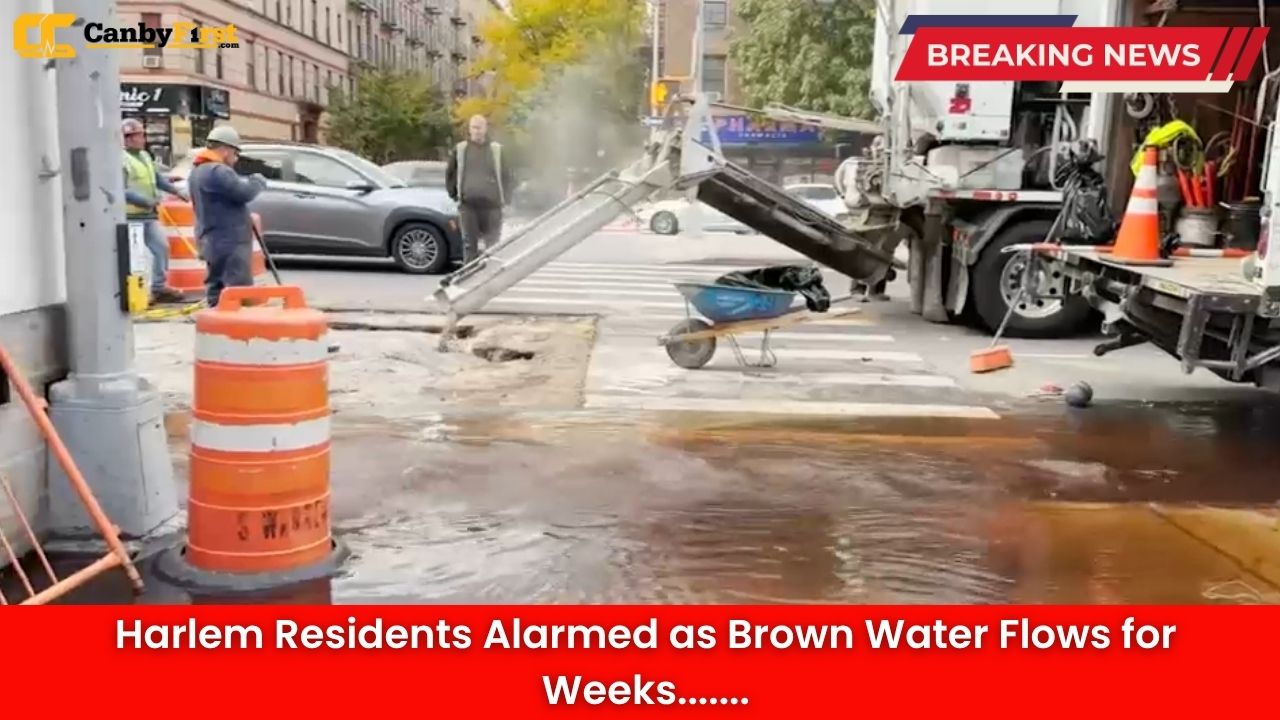New York, US:
For weeks now, parts of Harlem have been dealing with a troubling issue: brown, discolored water flowing from taps. Residents across several blocks have expressed growing concern about potential health risks, property damage, and what they see as a lack of urgency from local authorities to fix the problem.
A Worry That Won’t Wash Away
Residents first noticed the murky water earlier this month. At first, many assumed it was a one-day plumbing issue, but the problem persisted. According to neighbors along Adam Clayton Powell Jr. Boulevard and West 135th Street, the water has ranged from slightly yellow to a deep brown tint, often accompanied by an unpleasant metallic odor.
Also Read
For parents like Tasha Green, who lives with her two young children in a fifth-floor apartment, the situation has become unsettling. “I don’t let my kids drink it or even brush their teeth with it anymore,” she said. “I’ve been buying cases of bottled water every week. It’s expensive, but what choice do we really have?”
Scrambling for Answers
The city’s Department of Environmental Protection (DEP) has acknowledged receiving multiple complaints and confirmed that crews are investigating the cause. Officials suggested that aging iron pipes and recent construction work in the area may have stirred up sediment from inside the water mains.
However, that explanation has done little to calm frustrations. Residents question why the discoloration has lasted so long and why no temporary water stations have been set up. “We keep getting told it’s safe to drink, but how can we trust that?” said Marcus Bell, a longtime Harlem resident. “The water looks like tea. Would anyone want to drink that?”
Businesses Feel the Impact Too
Local business owners have also reported challenges. Café operators, laundromat owners, and small grocers are particularly affected. Maria Santos, who runs a small deli on Malcolm X Boulevard, explained that she stopped using tap water for coffee and food preparation altogether. “Customers notice,” she said. “If the water looks dirty, they think I’m not keeping the kitchen clean.”
Some businesses have resorted to purchasing filtered or bottled water in bulk. Others have adjusted their hours or temporarily closed to avoid reputational damage. For neighborhood-based entrepreneurs already managing high costs, this unexpected hurdle adds more financial pressure.
Officials Reassure, Residents Remain Skeptical
In a recent community meeting at the Harlem State Office Building, DEP representatives reassured residents that test results showed no evidence of dangerous contaminants like lead or bacteria. They maintained that the discoloration was due to mineral sediment and not an immediate health hazard.
Still, community members voiced skepticism. Many cited past incidents in New York and other cities where water contamination was downplayed before more severe issues emerged. “Even if it’s just iron, it’s still not right,” said community organizer Layla Johnson. “Our water shouldn’t look dirty. People feel ignored because this isn’t happening in Midtown or the Upper East Side.”
Historical Context and Infrastructure Aging
New York City’s water system, though one of the largest and most complex in the nation, relies on infrastructure that in some cases dates back over a century. Harlem, in particular, has numerous older residential buildings and smaller pipes that are more vulnerable to sediment buildup.
Experts note that when pipes corrode internally, small bits of iron and manganese can mix with the water supply, creating brown or reddish hues. While short-term exposure isn’t considered toxic, long-term corrosion may lead to leaks, pipe bursts, and degraded water quality. Repairing those systems can take months depending on funding and coordination among agencies.
Calls for Accountability and Transparency
Community boards across Harlem are now pressing the city for clearer communication. Residents want real-time water quality updates and more visible signs of progress. Several activists have urged the city to provide free water testing kits and mobile filter distribution until the issue is fully resolved.
Advocates also stress the broader equity concern: Harlem’s persistent infrastructure problems, from housing to transit, often go unaddressed for extended periods compared to other Manhattan neighborhoods. The brown water, they argue, is just the latest example of uneven public service response.
A Neighborhood Waiting for Clear Water
As crews continue flushing hydrants and testing samples, Harlem remains on alert—and impatient. For many, trust will only be restored when the water returns to normal and stays that way. Until then, residents say they’ll keep relying on bottled water and cautious optimism.
“I just want to see clear water again,” said Green, holding a glass up to the window light. “After weeks of this, clear water would finally feel like peace.”












